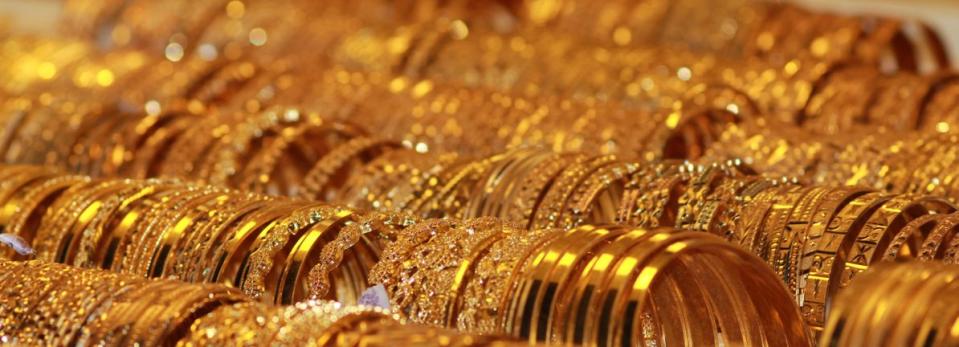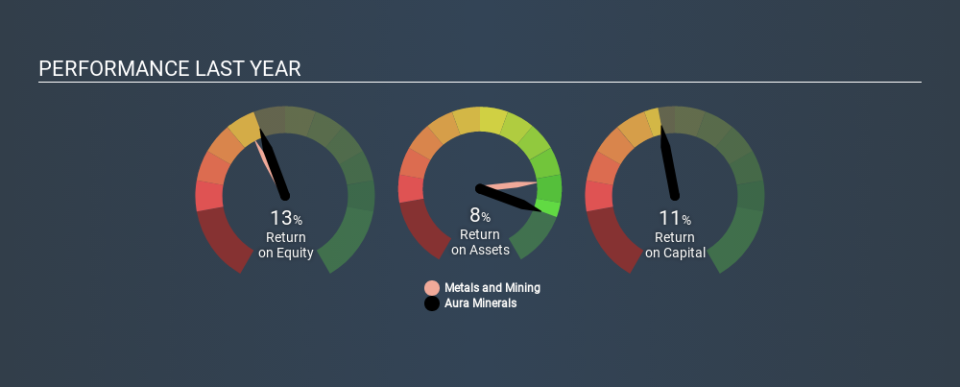Why We Like Aura Minerals Inc.’s (TSE:ORA) 11% Return On Capital Employed

Today we are going to look at Aura Minerals Inc. (TSE:ORA) to see whether it might be an attractive investment prospect. Specifically, we'll consider its Return On Capital Employed (ROCE), since that will give us an insight into how efficiently the business can generate profits from the capital it requires.
First, we'll go over how we calculate ROCE. Then we'll compare its ROCE to similar companies. And finally, we'll look at how its current liabilities are impacting its ROCE.
Return On Capital Employed (ROCE): What is it?
ROCE is a metric for evaluating how much pre-tax income (in percentage terms) a company earns on the capital invested in its business. In general, businesses with a higher ROCE are usually better quality. Overall, it is a valuable metric that has its flaws. Author Edwin Whiting says to be careful when comparing the ROCE of different businesses, since 'No two businesses are exactly alike.
So, How Do We Calculate ROCE?
Analysts use this formula to calculate return on capital employed:
Return on Capital Employed = Earnings Before Interest and Tax (EBIT) ÷ (Total Assets - Current Liabilities)
Or for Aura Minerals:
0.11 = US$28m ÷ (US$351m - US$87m) (Based on the trailing twelve months to December 2019.)
Therefore, Aura Minerals has an ROCE of 11%.
See our latest analysis for Aura Minerals
Is Aura Minerals's ROCE Good?
ROCE is commonly used for comparing the performance of similar businesses. Using our data, we find that Aura Minerals's ROCE is meaningfully better than the 3.8% average in the Metals and Mining industry. We consider this a positive sign, because it suggests it uses capital more efficiently than similar companies. Regardless of where Aura Minerals sits next to its industry, its ROCE in absolute terms appears satisfactory, and this company could be worth a closer look.
The image below shows how Aura Minerals's ROCE compares to its industry, and you can click it to see more detail on its past growth.
Remember that this metric is backwards looking - it shows what has happened in the past, and does not accurately predict the future. Companies in cyclical industries can be difficult to understand using ROCE, as returns typically look high during boom times, and low during busts. ROCE is only a point-in-time measure. Given the industry it operates in, Aura Minerals could be considered cyclical. If Aura Minerals is cyclical, it could make sense to check out this free graph of past earnings, revenue and cash flow.
How Aura Minerals's Current Liabilities Impact Its ROCE
Current liabilities are short term bills and invoices that need to be paid in 12 months or less. Due to the way ROCE is calculated, a high level of current liabilities makes a company look as though it has less capital employed, and thus can (sometimes unfairly) boost the ROCE. To counteract this, we check if a company has high current liabilities, relative to its total assets.
Aura Minerals has total assets of US$351m and current liabilities of US$87m. Therefore its current liabilities are equivalent to approximately 25% of its total assets. A fairly low level of current liabilities is not influencing the ROCE too much.
The Bottom Line On Aura Minerals's ROCE
Overall, Aura Minerals has a decent ROCE and could be worthy of further research. There might be better investments than Aura Minerals out there, but you will have to work hard to find them . These promising businesses with rapidly growing earnings might be right up your alley.
I will like Aura Minerals better if I see some big insider buys. While we wait, check out this free list of growing companies with considerable, recent, insider buying.
If you spot an error that warrants correction, please contact the editor at editorial-team@simplywallst.com. This article by Simply Wall St is general in nature. It does not constitute a recommendation to buy or sell any stock, and does not take account of your objectives, or your financial situation. Simply Wall St has no position in the stocks mentioned.
We aim to bring you long-term focused research analysis driven by fundamental data. Note that our analysis may not factor in the latest price-sensitive company announcements or qualitative material. Thank you for reading.

 Yahoo Finance
Yahoo Finance 
